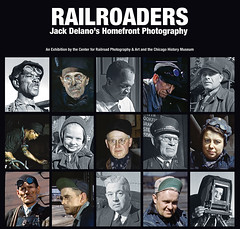Burlington’s Spectacular Steam Program
In the 1950s and 1960s, no railroad could top the steam program of the Chicago, Burlington & Quincy. The “Q”—as its many admirers affectionately knew it—operated more than 260 steam trips that carried more than 100,000 riders and left impressions on countless more trackside admirers. With well-honed photojournalistic sensibilities, John E. Gruber covered at least twenty-seven of these trips, portraying them as the events they were while capturing the power of their locomotives, the pride of their railroaders, and the wonder they inspired.
This softcover book presents nearly 100 of Gruber’s best black-and-white Burlington steam photographs, drawing from the 3,000 negatives he exposed while riding and chasing them. The lead essay by Norm Carlson draws on his first-hand experience with Burlington steam trips and his wide network of fellow enthusiasts who shared their memories. Additional text by Justin Franz provides background about the two principal locomotives, 4960 and 5632, and the poignant last run from Chicago to Denrock, Illinois, on July 17, 1966. Scott Lothes served as editor, selecting the photographs and writing captions.
- $30 plus $5 for domestic shipping
- Softcover, 8.5×11 inches, 80 pages, 98 photographs and two essays
- International shipping is available; please inquire by email at info [at] railphoto-art.org
See a YouTube preview of the book with Scott Lothes and Norm Carlson.
Cover photo: Chicago, Burlington & Quincy locomotive 5632 draws a crowd of admirers in West Burlington, Iowa, during a trip sponsored by the Illini Railroad Club on September 29, 1963. Photograph by John E. Gruber

Rio Grande Steam Finale: Narrow gauge railroad photography in Colorado and New Mexico
Drawing from thousands of images of the Rio Grande narrow gauge in the Center’s archive, editors Scott Lothes and Elrond Lawrence gathered the finest work on this rich subject by Tom Gildersleeve, John Gruber, Victor Hand, Don Hofsommer, Jim Shaughnessy, Fred Springer, Richard Steinheimer, and Karl Zimmermann. Inside Rio Grande Steam Finale you’ll find a stunning gallery of black & white and color images, lavishly presented and many published for the first time, covering the narrow gauge from Alamosa to Chama, Durango, Farmington, and Silverton.
Engaging essays by Hofsommer and Zimmermann, both of whom experienced the narrow gauge first-hand in the 1960s, provide context and personal insights. Extensive captions add context to the stories of the photographs, which trace the pattern of typical train operations of the era. The book concludes with a chapter of color images of today’s Durango & Silverton Narrow Gauge Railroad and the Cumbres & Toltec Scenic Railroad.
- Hardcover, 10×10 inches, 228 pages, more than 200 photographs and two essays
- Endpaper map and elevation profile by David Styffe
- $60 plus $5 for domestic shipping
- International shipping is available; please inquire by email at info [at] railphoto-art.org
Cover photo: Denver & Rio Grande Western locomotives 497 and 487 hammer up the four percent grade to Cumbres, Colorado, under a dramatic sky at Windy Point on October 3, 1967. Photograph by Victor Hand

Continuity & Change: The Lure of North American Railroads
That last notion is at the heart of this 384-page book. Railroads and photography came of age together in the nineteenth century and share a dynamic relationship in the twenty-first. That relationship flows from the traditions of both photojournalism and commercial photography, and it is defined today by the paradox of continuity and change.
Drawing from the Center’s talented community of image-makers and from their own lifelong interests in railroads and the visual arts, editors Alexander Craghead and Scott Lothes present a stunning body of work in a lavish production. As a bonus to commemorate the Center’s 25th anniversary, eight foldouts are included with spectacular railroad images that could not be limited to two pages of coverage.
Continuity & Change is a landmark book that makes the compelling case that the union of railroads and photography is as rich and potent as ever.
- Hardcover, 11×11 inches, 384 pages, 230 photographs including eight foldouts
- $65 plus $9 for domestic shipping (It weighs 6.5 pounds!)
- International shipping is available; please inquire by email at info [at] railphoto-art.org
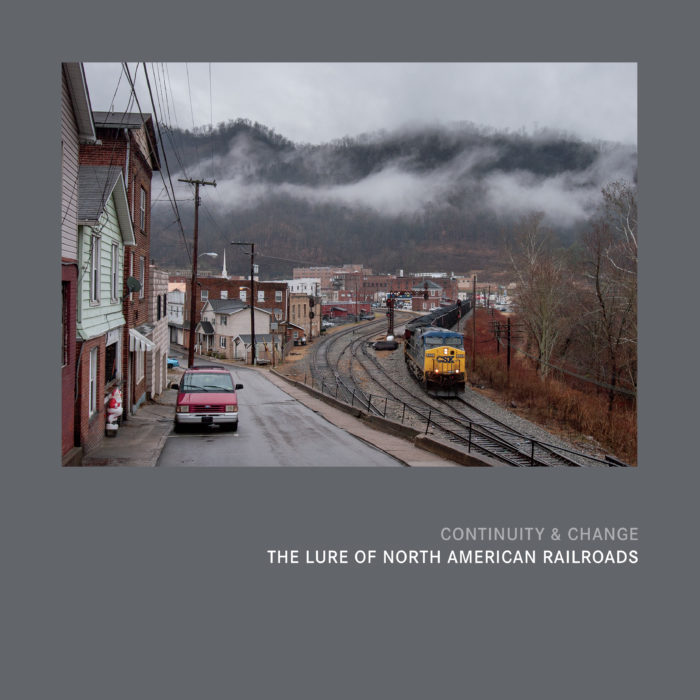
The Railroad and the Art of Place: An Anthology
Produced to the highest standards and featuring 230 color and black-and-white photographs, this deluxe 372-page book is printed on heavy stock and portrays a storied industrial culture in an entirely new context. Generously funded by the Kahler Family Charitable Fund.
$60 plus $5 for domestic shipping, hardcover, 11×11 inches, 372 pages, 230 photographs
International shipping is available; please inquire by email at info [at] railphoto-art.org

Digital Excerpts
- Michael Froio, “From the Main Line“
- Kevin Keefe, “Roundhouses From Above“
- Lewis Ableidinger, “North Dakota“
- Alexander Craghead, “Switching Districts“
The Railroad Photography of Donald W. Furler
Scott Lothes, the Center’s president and executive director, wrote the text and selected the photographs. His lead essay examines Furler’s life and photography, his relationship with the first editors of Trains magazine, and the changing railroad landscape of the Northeast. Maps by David Styffe present those railroads as they appeared in 1946 at the height of Furler’s activity and as they are today. Alan G. Furler, the photographer’s son, provides a poignant and personal Afterword.
$60 plus $5 for domestic shipping, hardcover, 10×11 inches, 216 pages, 200 duotone photographs
International shipping is available; please inquire by email at info [at] railphoto-art.org

The Railroad Photography of J. Parker Lamb
The text comes from Kevin P. Keefe and Fred W. Frailey. Frailey wrote a foreword that presents Lamb’s life story while contextualizing his work within the pantheon of railroad photography. Keefe served as editor, writing captions as well as an afterword focused on the singularity of Lamb’s photography in the South. Jeff Brouws and Wendy Burton did the design work, while Scott Lothes assisted with photo editing and digital prepress production.
$60 plus $5 for domestic shipping, hardcover, 10×11 inches, 208 pages, 160 duotone photographs
International shipping is available; please inquire by email at info [at] railphoto-art.org
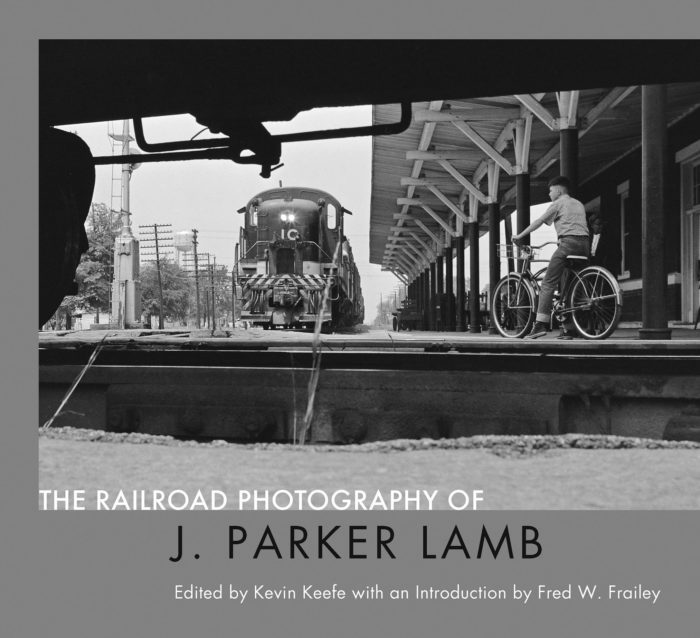
After Promontory: 150 Years of Transcontinental Railroading
Expanding on the visual themes in the companion exhibit, the book offers a deeper look at the circumstances, histories, and impacts of the railroads that came to connect the Midwest with the Pacific Coast. Essays by railroad historians Keith L. Bryant, H. Roger Grant, Don Hofsommer, and Maury Klein add context and depth to the book’s 240 photographs. Robert D. Krebs, who served in the executive offices of railroads in all three regions, including as chairman and CEO of the BNSF Railway, wrote the foreword. Photographer Drake Hokanson, in the book’s concluding essay, reflects on photographing the transcontinental railroads then and now, and what these images can teach us.
$60 plus $5 for domestic shipping, hardcover, 10×10 inches, 320 pages, color and b/w

International shipping is available; please inquire by email at info [at] railphoto-art.org
Beebe and Clegg: Their Enduring Photographic Legacy
Over the course of eight chapters, the book traces Beebe and Clegg’s life and times together, their visual influences, short lines, narrow gauge lines, Nevada and the Virginia & Truckee, and their photography. The book includes 222 images from the California State Railroad Museum Library and Archives, all scanned from negatives and carefully cleaned and checked, revealing surprises. Many are previously unpublished. Thirty-six additional images come from other sources. “Their legacy is larger than the publications they produced, for they demonstrated that railroads serve America as an icon of its experience,” authors John Gruber and John Ryan conclude.
$65, plus $5 for domestic shipping, hardcover, 8.5×11 inches, 224 pages, duotone
International shipping is available; please inquire by email at info [at] railphoto-art.org

Wallace W. Abbey: A Life in Railroad Photography
$50 plus $5 for domestic shipping, hardcover, 10×10 inches, 240 pages, b/w
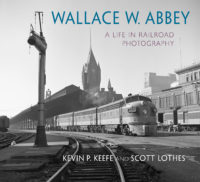
International shipping is available; please inquire by email at info [at] railphoto-art.org
The Railroad and The Art of Place
$60 plus $7 for domestic shipping, hardcover, 11×11 inches, 152 pages, duotone

International shipping is available; please inquire by email at info [at] railphoto-art.org
Significant Images of Railroading
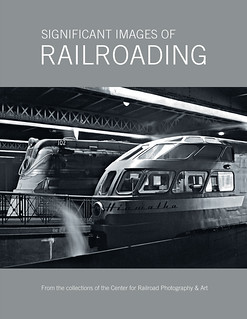
Significant Images of Railroading, edited by Center president Scott Lothes, is a 78-page, softcover book that, for the first time, presents an overview of the Center’s photography collections. Of the nearly 200,000 images in those collections, ninety-three are presented here in vibrant color and rich, quadtone black-and-white. Those images come from ten principal collections, including the work of Wallace W. Abbey, whose circa 1950 photograph from Chicago Union Station is featured on the cover. A preservation award from Trains magazine helped fund processing of the Abbey Collection. Other major holdings include the works of Fred M. Springer, John F. Bjorklund, and Ted Rose. Biographical sketches written by Jack Holzhueter introduce each section. Archives manager Jordan Radke completed processing work on many of the collections; archival partner Lake Forest College also contributed greatly to the processing work. In addition to the Trains award, funding for this special publication came from Fred and Dale Springer, the Candelaria Fund, and Bon and Holly French.
$19.95, softcover, 78 pages, color and b/w
International shipping is available; please inquire by email at info [at] railphoto-art.org
Railroaders: Jack Delano’s Homefront Photography
200-page, hardbound, 11- by 11.5-inch book published by the Center in 2015. Printed in the United States, it features 108 photographs, including seventy-three of Jack Delano’s 1942–1943 views of Chicagoland railroads and their workers, reproduced in full color with rich quadtones for the black-and-whites. Contempoary photographs by Jack’s son, Pablo Delano, and the Center’s John Gruber and Scott Lothes complement the catalog. There are essays by Pablo Delano, Gruber, and University of Texas professor Jeremi Suri, a leading public historian. Biographical essays prepared by Center editorial consultant Jack Holzhueter as well as Gruber and Lothes tell the life stories of the forty-nine railroaders.
Winner of the Railway & Locomotive Historical Society’s George W. and Constance M. Hilton Book Award.
$60, $50 for members of the Center, $5 domestic shipping, 200 pages, hardbound, color and b/w
International shipping is available; please inquire by email at info [at] railphoto-art.org

